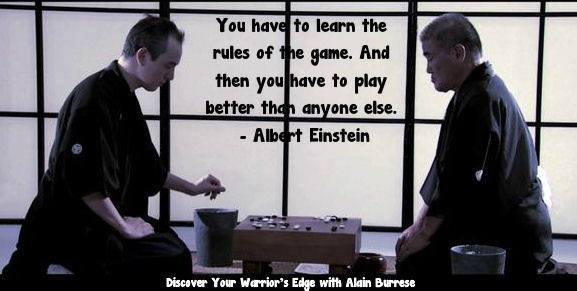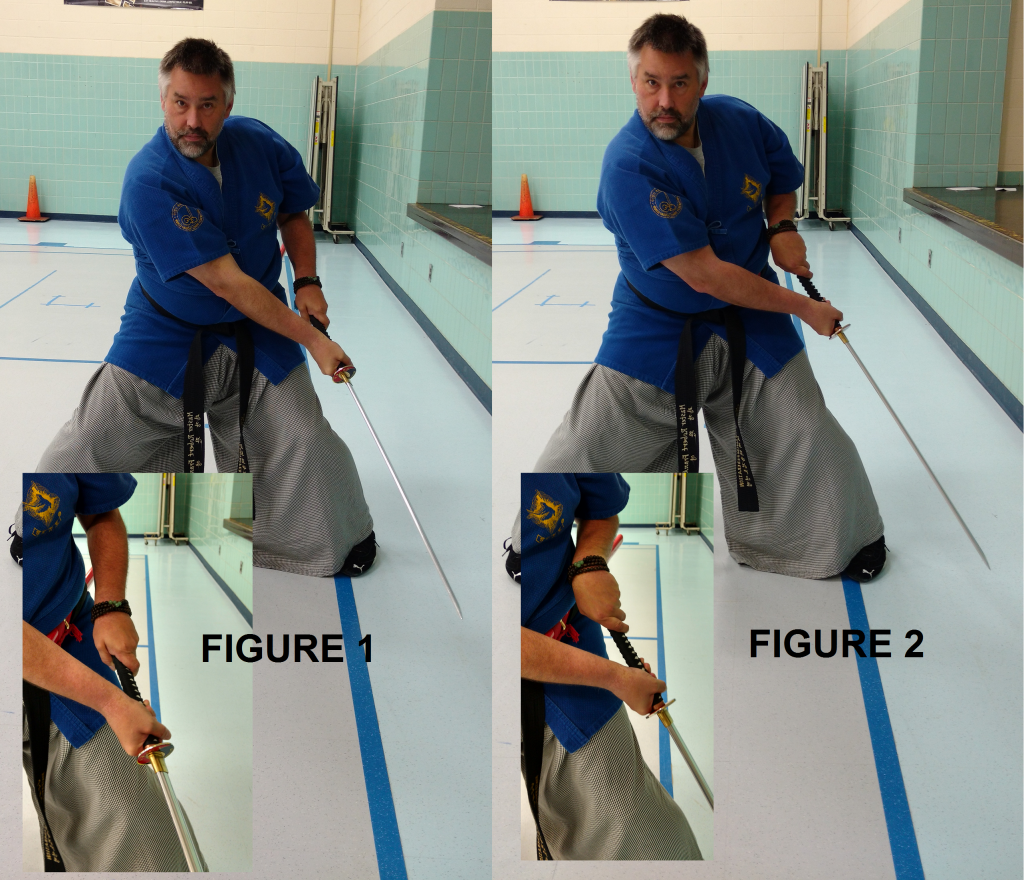There are SO many aspects to this thought. When I saw the picture below posted on Alain Buresse’s Warrior’s Edge page, it struck me immediately. The irony of the game below, Go, has very few rules but can take hours, even days, to play.

One aspect is that of academia. You can regularly see posts from parents who are disgruntled with school districts and their testing requirements. I agree. There is WAY too much focus on taking tests to provide memorized information that don’t truly score knowledge or intelligence.
Since that is part of the game, though, parents need to help the younglings understand it. The hardest part of playing any game is not knowing the rules. A person who can learn them from the experiences of others will progress more quickly.
This leads nicely to a couple blog posts by Anna Valdiserri. Over the past couple weeks she’s posted these – Rule of Dumb -1 and Rule of Dumb -2. Both of which discuss following the rules and those who won’t. She makes some very good points about stuff you may think are obvious…but no one had said them. The key to figure out here is how you can stay within the rules (honor, integrity) and not get trashed by those who won’t play by them.
Maybe a good development tool is your martial arts (or other) training. A common occurrence during class is asking about which stance should be in that movement. Is that a back stance? Yes, it is. But you had your foot over there (3 inches different from typical)? This kind of exchange happens all the time but has no real bearing on the movement or technique.
Now, some rules take precedence over other rules. Cutting with a sword has several of these. One example comes from Saseong Neri Bagi (big angle downward cuts). When doing a Left (to right) cut, it is rather easy to follow the rule “the sword stops nearly directly your side” as the twist through your torso will allow this as does help having your hands placed on the sword properly.
The struggle comes while trying to do a Right (to left) cut. As the hand placement on the sword affects your reach, the sword doesn’t get directly to the left side. This can cause the student to try still follow the rule of stopping directly to the side (figure 2). The problem with this is that it usually ends up violating a more important rule – “No kinky wrists.” By allowing the hand to turn or twist of the handle or the wrist to bend greatly, the student puts the sword in an awkward position where control is lost. The student following the more important rule of “No Kinky Wrists” (Figure 1) will find that the sword stops pointed about 45 degrees forward but allows proper cutting of targets.
Author: Master Robert Frankovich
As you read and enjoy the posts on this site, please consider “sharing” them! The “likes” help generate additional readership but “sharing” will help even more! Thank you for your assistance!
If you have questions, please feel free to contact me!



One thought to “Rules”
good point. as with most things in life, there are rules, and there is reality. The reality includes the fact that some rules are more important than other rules. Being able to apply the technique in a particular situation to complete the objective is dependent on this hierarchy.
Comments are closed.